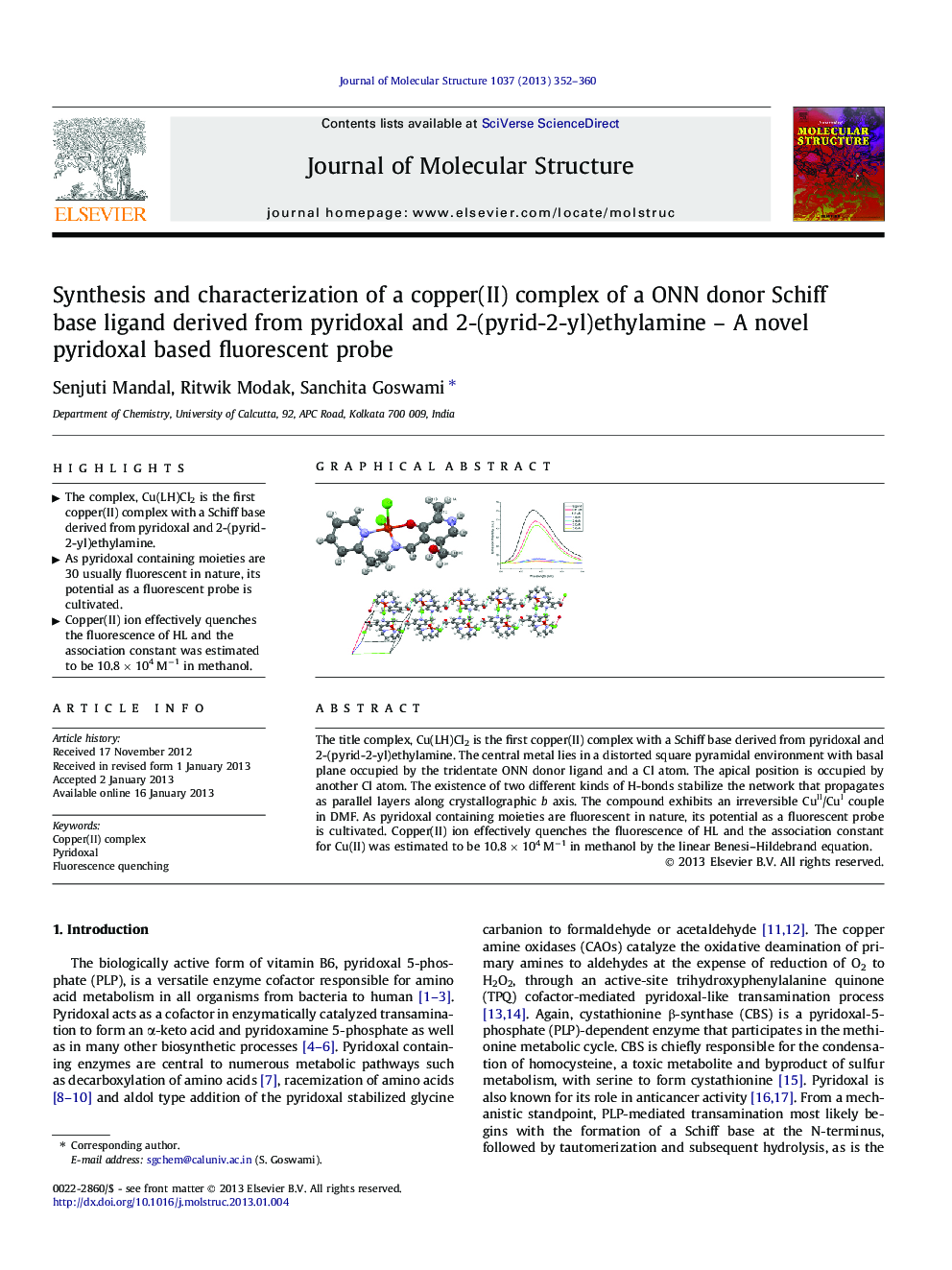| Article ID | Journal | Published Year | Pages | File Type |
|---|---|---|---|---|
| 1403092 | Journal of Molecular Structure | 2013 | 9 Pages |
The title complex, Cu(LH)Cl2 is the first copper(II) complex with a Schiff base derived from pyridoxal and 2-(pyrid-2-yl)ethylamine. The central metal lies in a distorted square pyramidal environment with basal plane occupied by the tridentate ONN donor ligand and a Cl atom. The apical position is occupied by another Cl atom. The existence of two different kinds of H-bonds stabilize the network that propagates as parallel layers along crystallographic b axis. The compound exhibits an irreversible CuII/CuI couple in DMF. As pyridoxal containing moieties are fluorescent in nature, its potential as a fluorescent probe is cultivated. Copper(II) ion effectively quenches the fluorescence of HL and the association constant for Cu(II) was estimated to be 10.8 × 104 M−1 in methanol by the linear Benesi–Hildebrand equation.
Graphical abstractFigure optionsDownload full-size imageDownload as PowerPoint slideHighlights► The complex, Cu(LH)Cl2 is the first copper(II) complex with a Schiff base derived from pyridoxal and 2-(pyrid-2-yl)ethylamine. ► As pyridoxal containing moieties are 30 usually fluorescent in nature, its potential as a fluorescent probe is cultivated. ► Copper(II) ion effectively quenches the fluorescence of HL and the association constant was estimated to be 10.8 × 104 M−1 in methanol.
